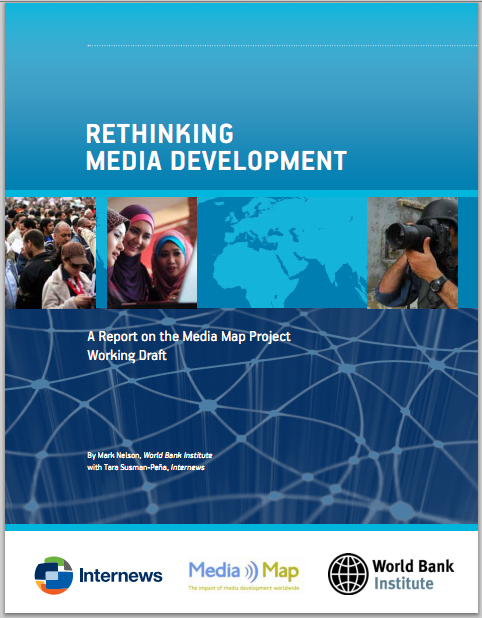Aiding Media: New Thinking on Media Development

Yesterday I spent my lunchtime at the Center for International Media Assistance's event on Media Development and Aid Effectiveness. This event celebrated the release of a new report, 'Rethinking Media Development,' which drew some conclusions from the ongoing Media Mapping Project. Many of these conclusions were reflected in the panel discusssion. Sina Odugbemi from the World Bank moderated a panel including Daniel Kaufmann (Brookings Institute), Mark Nelson (World Bank Institute), and Tara Susman-Pena (Internews). While 'aid effectiveness' took a backseat during much of the discussion, the panelists engaged in an interesting dicussion on the relationship media development has to media freedom and the development ecosystem as a whole. While there were many great takeaways from all the panelists, here are some of the most important:
- While a good amount of research has been done on the relationship between media and development, this research has not been well applied to policy or practice. The "preponderance of evidence" supports the link between the media sector and economic development and governance, but this link is not entirely understood. This lack of understanding means the research hasn't been well applied to media development projects and policies.
- Media development needs to be incorporated into an overall development strategy. It is equally important to incorporate national leadership and ownership of media projects, grounding media development in the culture and politics of the country.
- Media development projects need to focus on this national political and cultural environment. Much of journalists need nowadays is not traditional media training, but an environment that allows them to be effective. Working with governments and civil society, media development needs to work on policies and institutions that allow journalists to thrive. To protect journalists in conflict or situations of repression, this development needs to go beyond providing security training and focus on changing the culture of arrest and violence against the journalist. The aim here is to address the underlying problem, not provide a band-aid.
- Media freedom is necessary but not sufficient for media development. Developing a healthy media cannot be done with heavy censorship, but there are other requirements as well. Transparency alone cannot cope with corruption or violence, and needs a strong rule of law. There also needs to be an engaged citizenry who are willing to engage both with media and government to start creating change.
- It is important to look at media holistically, but deal with it selectively. Media must be considered in a wider societal scope, but it is impossible to tackle everything at once. Thinking smartly about the most impactual actions can help start the process of media development which can begin to build a sustainable and effective media.
This is a great start, but where to go from here? These are great lessons, which link back into contemporary thinking on aid effectiveness. The Media Mapping Project encourages the development community and researchers alike to use the data provided on the website and to think of innovative ways to strengthen the development of media around the world. We also need to begin understanding how new technologies are reshaping the media landscape and journalism everywhere. Today, media development has to look beyond the individual journalist and understand the role of media in society.
